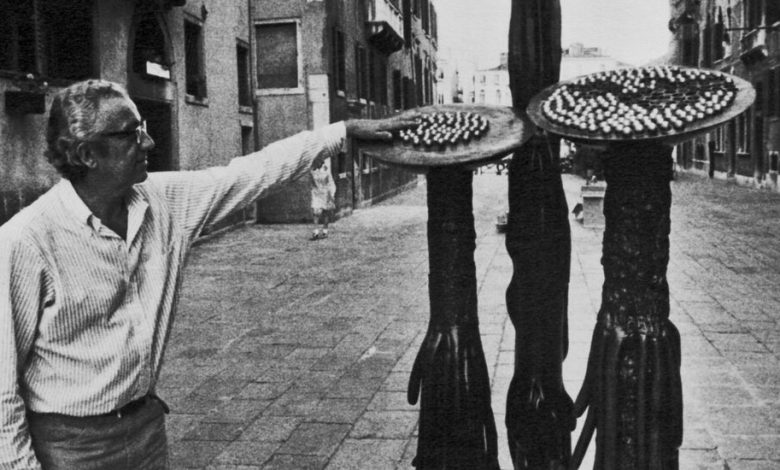Like His Illustrations, Leo Lionni Contained Multitudes

Before side hustles went mainstream, Leo Lionni was a multitasker — and a compartmentalizer. Best known as the writer and illustrator behind “Frederick,” “Swimmy” and more than 30 other children’s books, Lionni also had a distinguished career as a graphic designer and art director, helping Eric Carle and Andy Warhol get their starts. But, according to his granddaughter, Annie Lionni, the artist kept his own paintings, sculptures, mosaics and lithographs — what he called “art with a capital A” — separate from the rest of his work.

The big fish in “Swimmy” is made up of many little fish, banding together to frighten a threatening tuna.Credit…Leo Lionni
“Leo believed … that the more a gallery owner knew about his accomplishments as a graphic designer and children’s book author, the less likely it was that he or she would take his fine art seriously,” Annie Lionni writes in LEO LIONNI: Storyteller, Artist, Designer (Abbeville Press, $39.95). Co-edited by Leonard S. Marcus, Steven Heller, Annie Lionni and Stephanie Haboush Plunkett, this first survey of Lionni’s legacy comes out in conjunction with a retrospective of his work at the Norman Rockwell Museum in Stockbridge, Mass.
Twenty-four years after his death, the book lowers the velvet ropes separating the quadrants of Lionni’s creative output. Who knew that the creator of the most recognizable mice since Stuart Little also dreamed up the prototype for Sports Illustrated? A reader will see a mosaic-inspired pavilion Lionni designed for the 1958 Brussels World’s Fair, followed quickly by a rainbow checkerboard illustration from “Pezzettino.” Suddenly, it becomes clear that, like the chameleons in “A Color of His Own,” Lionni had a rare ability to change shades — and retain his signature vibrancy — while moving, seemingly effortlessly, from one realm to another.
